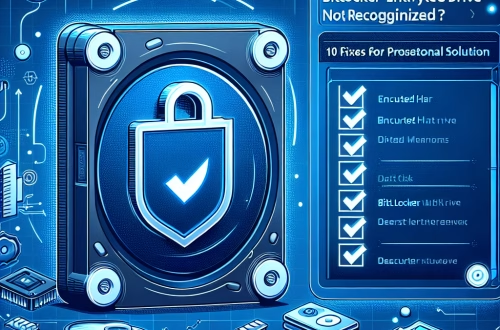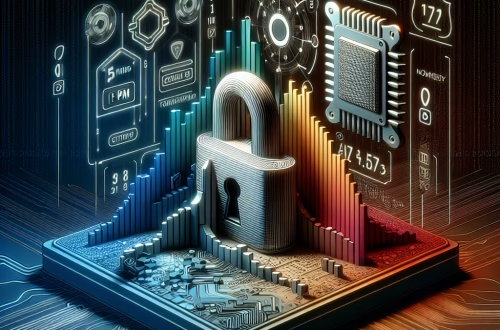BitLocker Auto-Unlock Not Working
Summary:
BitLocker auto-unlock is a feature designed to automatically decrypt BitLocker-protected drives when the operating system volume is unlocked, eliminating the need for manual password entry on secondary drives. When auto-unlock fails, users must manually enter recovery keys, disrupting workflow and potentially causing data access delays. Common triggers include TPM (Trusted Platform Module) malfunctions, incorrect Group Policy settings, corrupted BitLocker metadata, or system updates that reset security configurations. This issue primarily affects Windows 10/11 systems with multiple encrypted drives.
What This Means for You:
- Immediate Impact: You will need to manually enter recovery keys for secondary BitLocker-encrypted drives, delaying access to critical data.
- Data Accessibility & Security: Ensure your BitLocker recovery key is stored securely but remains accessible—preferably in multiple locations like Microsoft accounts, USB drives, or printed copies.
- System Functionality & Recovery: Check TPM status and BitLocker configurations via
manage-bde -statusto diagnose auto-unlock failures before attempting repairs. - Future Outlook & Prevention Warning: Regularly verify BitLocker settings after Windows updates or hardware changes, as these can disrupt auto-unlock functionality.
Explained: BitLocker Auto-Unlock Not Working
Solution 1: Resetting the TPM
BitLocker relies on the TPM to store encryption keys securely. If the TPM is cleared or malfunctions, auto-unlock may fail. To reset the TPM:
- Open TPM Management (tpm.msc) and check its status.
- If the TPM is inactive, run
tpm.msc> Clear TPM (requires administrator privileges). - Reboot and reinitialize BitLocker using
manage-bde -on C:(replace “C:” with the target drive).
Note: Clearing the TPM will require reconfiguring BitLocker and may necessitate entering recovery keys.
Solution 2: Using the Recovery Key
If auto-unlock fails, manually unlock the drive:
- Boot into Windows and open Command Prompt (Admin).
- Run
manage-bde -unlock D: -RecoveryPassword [YOUR_KEY](replace “D:” with the drive letter). - Re-enable auto-unlock with
manage-bde -autounlock -enable D:.
Store recovery keys in a secure but accessible location to avoid permanent data loss.
Solution 3: Advanced Troubleshooting
Corrupted BitLocker metadata can disable auto-unlock. Repair steps:
- Run
chkdsk /fto fix disk errors. - Use
repair-bde C: D: -rp [RECOVERY_KEY] -forceto rebuild metadata (back up data first). - Verify Group Policy settings (
gpedit.msc) under Computer Configuration > Administrative Templates > Windows Components > BitLocker.
Solution 4: Data Recovery Options
If the drive remains inaccessible:
- Boot from a Windows recovery USB and select Repair your computer > Troubleshoot > BitLocker Repair.
- Use third-party tools like DiskGenius or EaseUS Data Recovery (for non-system drives).
- Contact Microsoft Support if the volume is critically corrupted.
People Also Ask About:
- Why does BitLocker auto-unlock fail after a Windows update? Updates may reset TPM or BitLocker configurations—re-enable auto-unlock post-update.
- Can I bypass BitLocker auto-unlock? No, but manual recovery keys or disabling encryption are alternatives.
- Does auto-unlock work for external drives? Only if configured via
manage-bde -autounlock -enable. - How do I back up my BitLocker recovery key? Use
manage-bde -protectors -get C:to locate stored keys.
Other Resources:
Suggested Protections:
- Regularly back up BitLocker recovery keys to multiple secure locations.
- Monitor TPM status after system updates or hardware changes.
- Enable BitLocker network unlock for enterprise environments.
- Use
manage-bde -protectors -addto add multiple authentication methods (e.g., PIN + TPM).
Expert Opinion:
“BitLocker auto-unlock failures often stem from overlooked TPM or policy misconfigurations. Proactively auditing BitLocker settings and maintaining accessible recovery keys are critical for enterprise data continuity. Future Windows updates may introduce more resilient auto-unlock mechanisms, but user diligence remains key.”
Related Key Terms:
- BitLocker recovery key
- TPM (Trusted Platform Module)
- manage-bde command
- BitLocker Group Policy
- Windows encryption
*Featured image sourced by DallE-3





